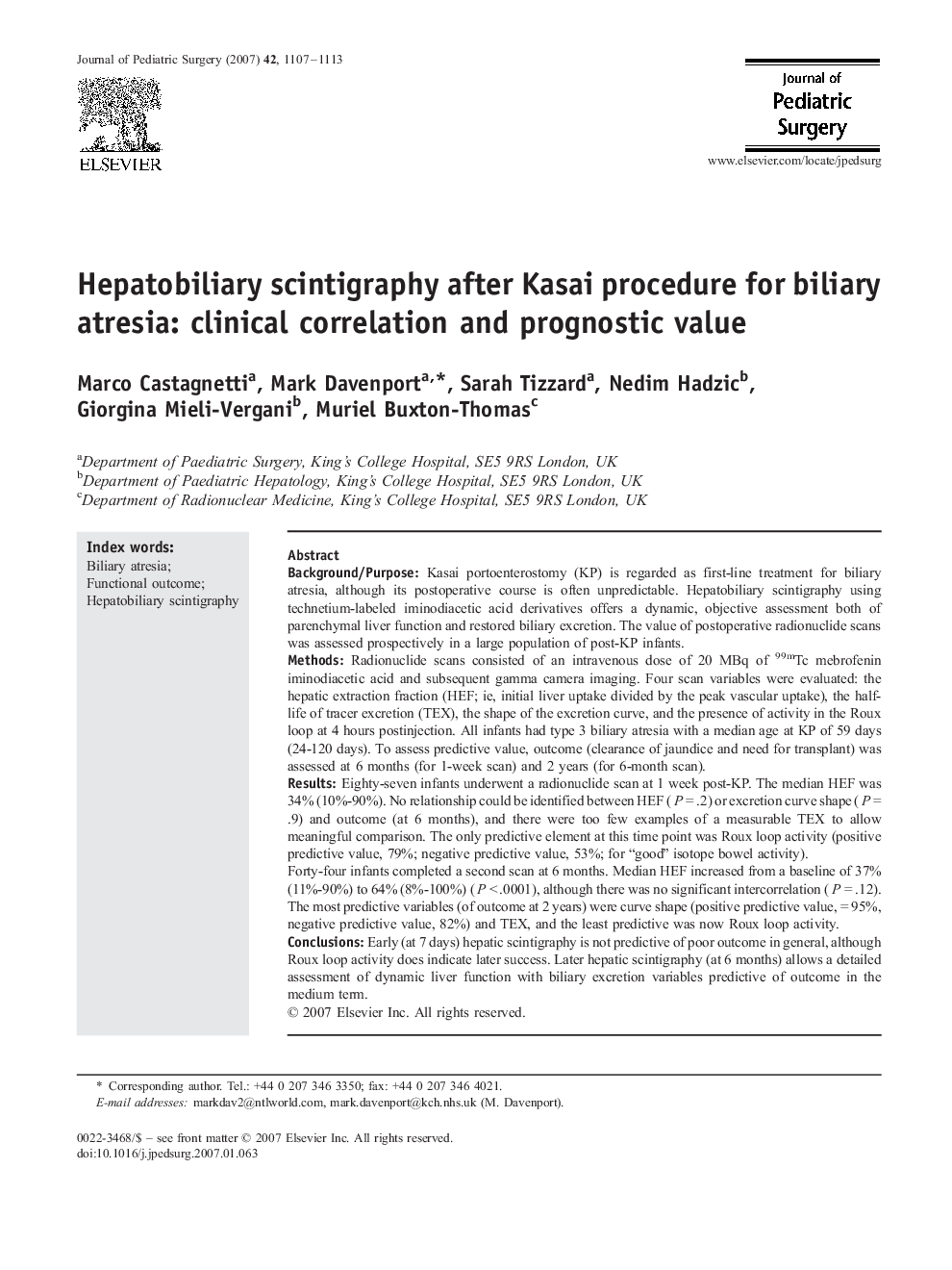| Article ID | Journal | Published Year | Pages | File Type |
|---|---|---|---|---|
| 4159554 | Journal of Pediatric Surgery | 2007 | 7 Pages |
Background/PurposeKasai portoenterostomy (KP) is regarded as first-line treatment for biliary atresia, although its postoperative course is often unpredictable. Hepatobiliary scintigraphy using technetium-labeled iminodiacetic acid derivatives offers a dynamic, objective assessment both of parenchymal liver function and restored biliary excretion. The value of postoperative radionuclide scans was assessed prospectively in a large population of post-KP infants.MethodsRadionuclide scans consisted of an intravenous dose of 20 MBq of 99mTc mebrofenin iminodiacetic acid and subsequent gamma camera imaging. Four scan variables were evaluated: the hepatic extraction fraction (HEF; ie, initial liver uptake divided by the peak vascular uptake), the half-life of tracer excretion (TEX), the shape of the excretion curve, and the presence of activity in the Roux loop at 4 hours postinjection. All infants had type 3 biliary atresia with a median age at KP of 59 days (24-120 days). To assess predictive value, outcome (clearance of jaundice and need for transplant) was assessed at 6 months (for 1-week scan) and 2 years (for 6-month scan).ResultsEighty-seven infants underwent a radionuclide scan at 1 week post-KP. The median HEF was 34% (10%-90%). No relationship could be identified between HEF (P = .2) or excretion curve shape (P = .9) and outcome (at 6 months), and there were too few examples of a measurable TEX to allow meaningful comparison. The only predictive element at this time point was Roux loop activity (positive predictive value, 79%; negative predictive value, 53%; for “good” isotope bowel activity).Forty-four infants completed a second scan at 6 months. Median HEF increased from a baseline of 37% (11%-90%) to 64% (8%-100%) (P < .0001), although there was no significant intercorrelation (P = .12). The most predictive variables (of outcome at 2 years) were curve shape (positive predictive value, = 95%, negative predictive value, 82%) and TEX, and the least predictive was now Roux loop activity.ConclusionsEarly (at 7 days) hepatic scintigraphy is not predictive of poor outcome in general, although Roux loop activity does indicate later success. Later hepatic scintigraphy (at 6 months) allows a detailed assessment of dynamic liver function with biliary excretion variables predictive of outcome in the medium term.
